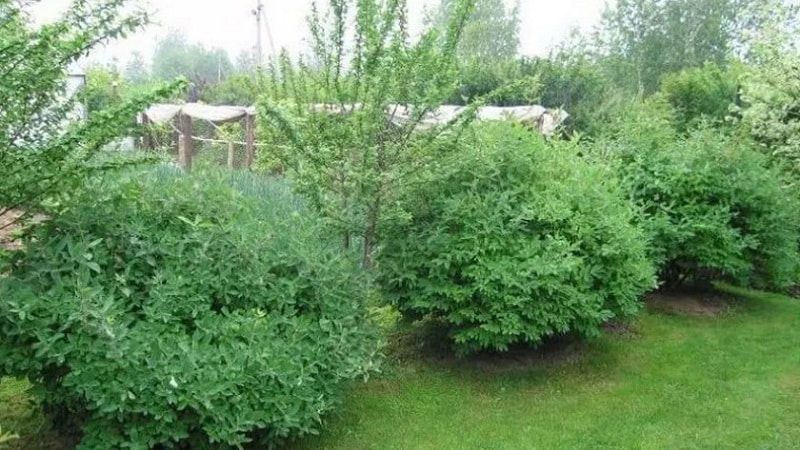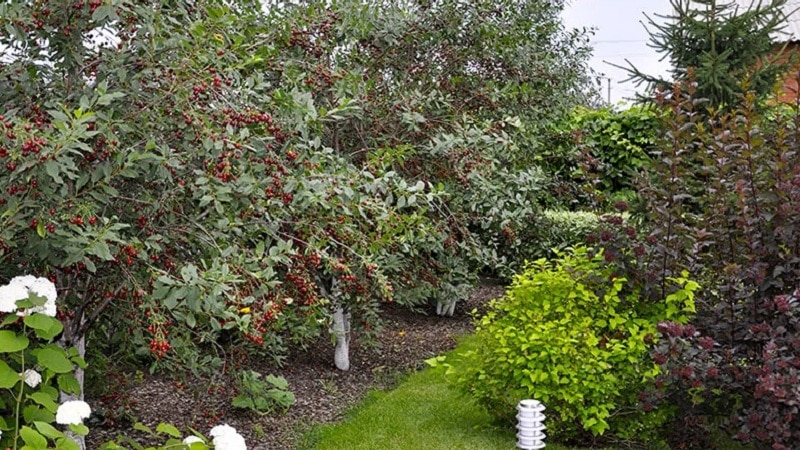What can honeysuckle be planted next to and why is it important?
A climbing shrub called honeysuckle is a frequent visitor to European gardens and parks. In Russia, this plant is not so popular, but thanks to its ease of care and tasty fruits, gardeners are increasingly planting it on their plots. Honeysuckle does not get along well with all crops. The article will tell you what you can plant honeysuckle next to and what kind of proximity will be unfavorable for the plant.
Rules for crop rotation when growing honeysuckle
Each culture has a corresponding row typical diseases and dangerous pests.
The requirements for nutritional elements are also different. These factors are taken into account when planting honeysuckle bushes.
Crop rotation rules prohibit:
- plant plants of the same family in one area for several years in a row;
- plant honeysuckle after crops that have diseases or pests in common with it;
- use the site after growing plants that require the same set of nutrients.
Why is it important to follow the rules of crop rotation?
Insect larvae and pathogens tend to accumulate in the soil. This creates unfavorable conditions for growing honeysuckle.
If over a long period of time, the plant takes the same microelements from the ground, an imbalance occurs. The nutritional value of the soil is replenished with organic and mineral fertilizers and alternation of plant species grown.
Impact on growth and yield
Rotation of crops significantly reduces the risk of disease and promotes fruiting. The root system produces a sufficient amount of nutrients, and the bush grows quickly.

What is the best place to plant honeysuckle next to?
To honeysuckle pleased with the rich harvest and did not feel constrained in growth, she is provided with a favorable environment.
Exists several main reasons for plant incompatibility:
- the location of the roots at the same level in the soil layers;
- release of harmful substances that suppress the growth and development of neighbors;
- excessive shading by large trees and spreading bushes;
- consumption of one set of nutrients, microelements;
- common diseases and pests with nearby plantings.
Each option has negative consequences that will complicate garden care in the future.. If you do not take into account the length of the roots of neighboring plants, you can end up with a barren area. Plants will suffer from lack of nutrition and their growth will slow down. The same thing will happen if you plant a bush or tree next to honeysuckle that uses an identical set of nutrients for development.
Some plants release toxic substances into the environment through their roots or foliage. for protection against pests. However, such protection may harm other plantings.
You should not plant such a light-loving plant as honeysuckle in the shade of spreading trees. with dense foliage. Due to lack of sun, the shrub will quickly wither. In addition, it is almost impossible to prevent an epidemic of a common disease or pest invasion in such conditions.
Gooseberry compatibility
Compatibility with gooseberries is high, therefore such a neighborhood is acceptable on a garden plot.However, these two shrubs must be planted at a distance of at least 1.5 m.
With raspberries
Raspberries are considered a freedom-loving plant - they have a powerful and developed root system that interferes with other crops. However This shrub feels good next to honeysuckle.
Experienced gardeners recommend planting raspberries at a short distance from honeysuckle, and in between sowing oats and vetch, which will saturate the soil with nitrogen and suppress the growth of weeds.
With currants
Currants and honeysuckle are similar in their unpretentiousness and frost resistance. The chemical compatibility of these shrubs is also high - the harmful substances released by honeysuckle will not harm the currants. However, this applies to black currants: in tandem, both crops will delight you with productivity. But next to red currants, honeysuckle will suffer from a lack of nutrients.
Attention! Barberry will be an excellent neighbor for honeysuckle. Its flowers attract insects, but the plant does not take the microelements necessary for the shrub.
With grapes
Grapes need abundant irrigation, so his neighbors select plants that will not suffer from excess moisture.
Honeysuckle is one of them; water gives its fruits the best taste. Additionally, it protects the vine from root pests.
With cherry
Cherry provides abundant shade, which is harmful to light-loving honeysuckle. In the shade of cherry trees, the shrub slows down and bears fruit poorly. However, if you plant it at a distance of about 2 m, the bush will develop steadily and will not harm the fruit tree.

With blueberries
Honeysuckle does not like high acidity of the soil, and it is this indicator that is necessary blueberries. Therefore, such a neighborhood is not recommended.Gardeners try to maintain a distance of 3-4 m between these plants. Honeysuckle is placed on the north side so that it protects the heat-loving blueberry from the cold wind.
With blackberries
In this case, avoid planting honeysuckle next to creeping varieties of blackberries., since young seedlings of this plant need free space for full development. Next to the bramble, which grows vertically upward, honeysuckle feels great.
Bad neighborhood for a plant
Apricot, bird cherry and walnut release toxic substances into the soil around them, which can harm honeysuckle bushes. Spruce, pine, rowan, pear and apple trees have a dense crown and provide a lot of shade, in addition, they take most of the nutrients from the soil.
Fennel, hyssop and spurge are aggressive crops, but strawberries and sea buckthorn are different rapid growth. The latter can still be found next to honeysuckle, but for this purpose the growth of its root system is limited by special slate structures.
Honeysuckle does not like drought and appreciates an abundance of moisture, therefore crops that do not require regular watering are unsuitable for planting next to this shrub.
Planting pollinator varieties nearby
For a good harvest, it is recommended to plant several at once. honeysuckle varieties. This will attract large numbers of bumblebees and bees.
The best combinations of varieties:
- Berel – Amphora – Bakcharskaya;
- Cinderella – Nymph – Parambelskaya;
- Blue spindle – Chosen One – Morena – Blue Bird.
The best and worst predecessors
Shrubs are planted after potatoes, onions, carrots and beets. These plants do not deplete the soil and do not leave behind diseases or pest larvae.Legumes are ideal - they will saturate the soil with nitrogen, which will have a beneficial effect on the root system of the bush.
New seedlings are not placed in the place of old bushes. This should not be done in areas where strawberries, conifers, cherries and cherries grew.
At what distance to plant honeysuckle
Avoid planting bushes close to each other.. This will make it difficult to care for the plantings and harvest. It is better to maintain a distance of 1.5-2 m and alternate different varieties, which will extend the fruiting of the bushes throughout the entire season.

Should I plant two bushes next to each other?
Planting two or more bushes is required for high-quality pollination. Insects will carry pollen from one plant to another, greatly increasing crop yields. You can place plantings in the corners of the site, having agreed with your neighbors about the possibility of cross-pollination.
Conclusion
Honeysuckle has recently appeared on Russian sites, so many of the features of its cultivation are unknown to gardeners. According to the rules of crop rotation, an area suitable for planting bushes is determined. By choosing the optimal neighborhood and following the rules of pollination, you get a rich harvest of delicious berries.